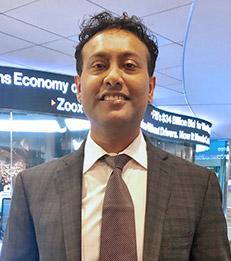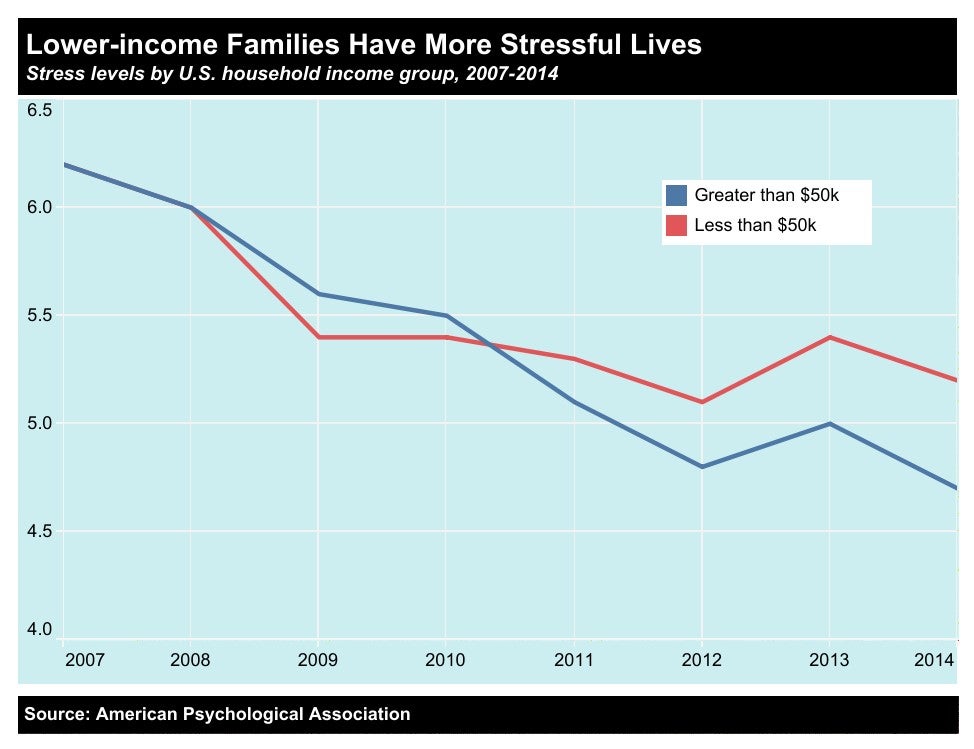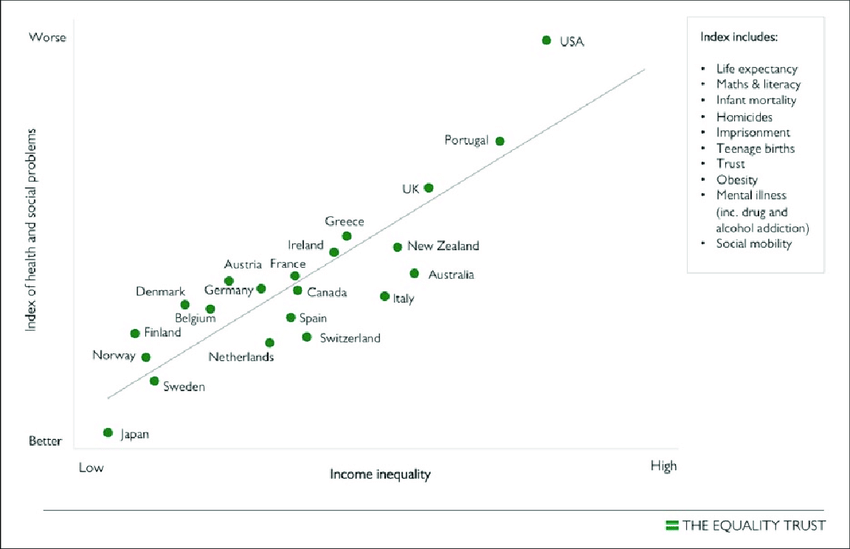Opinion
Income Inequality is Changing You from the Inside Out – A Post COVID-19 Perspective
—

By Haran Segram and Melanie Sequeira
The latest unemployment report shows only a third of lost jobs to the pandemic have been regained and that participation rates remain stable. Multiple market analyses have predicted an oncoming evictions crisis, as more than 30 million Americans are potentially at risk. More than ever, it is clear that income inequality is no longer an ignorable topic. Numerous research studies have proven its drastic effects. These effects extend down to the individual level – including some permanent changes to bodily functioning, most concerningly including the brain. Waiting to remediate the growing divide will only allow for larger numbers of lower income individuals to become prone to the lifelong consequences researchers are finding.
With this research being uncovered, we must demand solutions now. As the current pandemic has shown us, it is critical to act proactively and create social systems that protect individuals before they fall victim to the negative impacts of income inequality. Moreover, in a post COVID-19 world, the income inequality gap has been exacerbated due to structural failures in financial inclusion. The “left behind”- low income families- are becoming almost invisible in the rear-view mirror — at least 40% of people earning below $40,000 annually were laid-off or furloughed in the early stages of the pandemic. These individuals are disappearing as they experience financial devastation through lost income or savings. Most are unprotected as they are unbanked or underbanked, and the government does not have direct transfer mechanisms to reach these susceptible populations. Without protections, these individuals are likely to experience economic deaths. If this catastrophe is unaddressed, economic deaths (personal bankruptcies and financial disasters) will far exceed COVID-19 related deaths and the ill effects will have multigenerational consequences.
We specifically argue that redistribution policies via taxes, targeted tax credits, and deductions favoring the low-income filers are the most efficient and effective ways to fight the ills of income inequality. The aim of these policy recommendations is not to penalize the rich, but to evade imminent circumstances of severe inequality. Such policies would ensure more equal share of growth and encourage future economic growth. These policies would also have the ability to promote better equality in accessing education and personal health care. Equality of opportunity creates the hope that people can climb the economic and social ladder to keep the “American Dream” alive for many -- not just the select few. This will result in a burgeoning middle class with sufficient money to spend.

Importantly, redistribution policies on the individual level provide defense to many of the observed repercussions of income inequality. This defense is not just limited to financial health, but extends to emotional and social well-being. Specifically, redistribution policies act as a defense to the far greater stress levels that lower-income individuals face. These greater stress levels are a result of financial stress among low-income individuals, as they are unable to afford the basic physiological tenets of human needs such as food and shelter. Financial stress then touches every aspect of life from parenting, career development, to even physical ailments such as ulcers. Thus, the impact of additional financial resources to address basic needs is powerful on an individual.
While the aforementioned effects of income inequality may cause concern, there is a growing body of research that much more personally demonstrates the influence of income inequality. Specifically, researchers are finding that there are connections between income inequality and physiological changes in the brain. This correlation is concerning at surface level - the brain’s functioning directly impacts cognitive functioning of a human, influencing their health, work, and interactions with others. Moreover, it is alarming that research has indicated findings that brain growth is impacted by family poverty, and that temporal dynamics and plasticity of the brain respond to learning environments. While research on the relation between income inequality and neurophysiological health remain new, the current findings indicate the importance of studying income inequality and remedying it.

In order to offset the damages caused to individuals by income inequality that research demonstrates, Congress should not delay in taking action. As the House and Senate deliberate on pandemic relief solutions, they need to consider how COVID-19 has widened the income inequality gap and thus, create future-forward policies. While lowering income inequality itself is an extensive process which will require both government and business restructuring of pay and tax systems, there are immediate solutions that can be used to mitigate income inequality’s negative externalities. It’s clear that implementing solutions, including redistribution through taxes, implementation of minimum incomes, setting of goal pay ratios in companies, and development of service provisions, is vital. The pandemic is amplifying all of the detrimental effects of sustained income inequality. To combat this looming societal crisis, redistribution policies are the most effective and efficient ways to ensure a just future for all.
____
Haran Segram is Clinical Assistant Professor of Finance. Melanie Sequeira is a graduate from the undergraduate program and a research student of Professor Segram.
With this research being uncovered, we must demand solutions now. As the current pandemic has shown us, it is critical to act proactively and create social systems that protect individuals before they fall victim to the negative impacts of income inequality. Moreover, in a post COVID-19 world, the income inequality gap has been exacerbated due to structural failures in financial inclusion. The “left behind”- low income families- are becoming almost invisible in the rear-view mirror — at least 40% of people earning below $40,000 annually were laid-off or furloughed in the early stages of the pandemic. These individuals are disappearing as they experience financial devastation through lost income or savings. Most are unprotected as they are unbanked or underbanked, and the government does not have direct transfer mechanisms to reach these susceptible populations. Without protections, these individuals are likely to experience economic deaths. If this catastrophe is unaddressed, economic deaths (personal bankruptcies and financial disasters) will far exceed COVID-19 related deaths and the ill effects will have multigenerational consequences.
We specifically argue that redistribution policies via taxes, targeted tax credits, and deductions favoring the low-income filers are the most efficient and effective ways to fight the ills of income inequality. The aim of these policy recommendations is not to penalize the rich, but to evade imminent circumstances of severe inequality. Such policies would ensure more equal share of growth and encourage future economic growth. These policies would also have the ability to promote better equality in accessing education and personal health care. Equality of opportunity creates the hope that people can climb the economic and social ladder to keep the “American Dream” alive for many -- not just the select few. This will result in a burgeoning middle class with sufficient money to spend.

Importantly, redistribution policies on the individual level provide defense to many of the observed repercussions of income inequality. This defense is not just limited to financial health, but extends to emotional and social well-being. Specifically, redistribution policies act as a defense to the far greater stress levels that lower-income individuals face. These greater stress levels are a result of financial stress among low-income individuals, as they are unable to afford the basic physiological tenets of human needs such as food and shelter. Financial stress then touches every aspect of life from parenting, career development, to even physical ailments such as ulcers. Thus, the impact of additional financial resources to address basic needs is powerful on an individual.
While the aforementioned effects of income inequality may cause concern, there is a growing body of research that much more personally demonstrates the influence of income inequality. Specifically, researchers are finding that there are connections between income inequality and physiological changes in the brain. This correlation is concerning at surface level - the brain’s functioning directly impacts cognitive functioning of a human, influencing their health, work, and interactions with others. Moreover, it is alarming that research has indicated findings that brain growth is impacted by family poverty, and that temporal dynamics and plasticity of the brain respond to learning environments. While research on the relation between income inequality and neurophysiological health remain new, the current findings indicate the importance of studying income inequality and remedying it.

In order to offset the damages caused to individuals by income inequality that research demonstrates, Congress should not delay in taking action. As the House and Senate deliberate on pandemic relief solutions, they need to consider how COVID-19 has widened the income inequality gap and thus, create future-forward policies. While lowering income inequality itself is an extensive process which will require both government and business restructuring of pay and tax systems, there are immediate solutions that can be used to mitigate income inequality’s negative externalities. It’s clear that implementing solutions, including redistribution through taxes, implementation of minimum incomes, setting of goal pay ratios in companies, and development of service provisions, is vital. The pandemic is amplifying all of the detrimental effects of sustained income inequality. To combat this looming societal crisis, redistribution policies are the most effective and efficient ways to ensure a just future for all.
____
Haran Segram is Clinical Assistant Professor of Finance. Melanie Sequeira is a graduate from the undergraduate program and a research student of Professor Segram.
